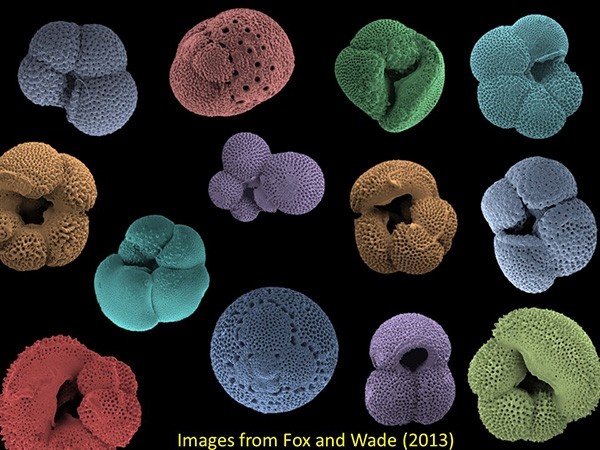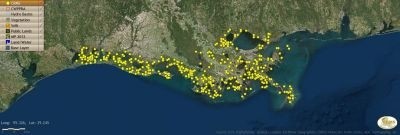October 26th - NIOZ postdoc Nicole Bale
Expertise: Organic Geochemistry, Marine Biogeochemistry, Intact polar lipids, Liquid Chromatography Mass Spectrometry
Abstract will follow
October 30th - EXTRA colloquium from the ECORD Distinguished Lecturer program
Biotic response to Cenozoic climate perturbations: new insights from ocean drilling
By Bridget Wade, Department of Earth Sciences, University College London
Determining past oceanographic change often involves organic or inorganic geochemical proxies, however, there is a wealth of information available from examining alterations in the assemblages of marine biota. Microscopic fossils (foraminifera, nannofossil, diatoms, radiolarians) are abundant in deep sea sediments and can provide a record of paleoceanographic change.
Marine cores from the International Ocean Discovery Program and its predecessors allows examination of how different groups responded through time, and in particular their reaction at climatic perturbations. Changes in the marine biota may involve the extinction of species or groups of species that can tell us about alterations in their habitat. It can also comprise the enhanced abundance of a particular species, or a group, for a short interval of time (acme events).
The dwarfing of organisms is increasingly becoming recognized as a response to environmental stress, however, I will show several intervals in the Cenozoic where a species became much larger for a short interval of time. Different plankton groups respond in different ways. For example, a major turnover in both calcareous (planktonic foraminifera) and siliceous (radiolarians) zooplankton occurred at the middle/late Eocene boundary about 38 Ma. New analysis of the nannofossil assemblages indicates a relatively muted response, and demonstrates the contrasting sensitivity to environmental change in these plankton groups. This talk focuses on Cenozoic ocean drilling records where the marine microfossils respond in sometimes mysterious ways, with particular focus on the Eocene, Oligocene and Miocene

November 2nd - NIOZ Tenure track scientist Julia Engelmann
Expertise: Causal network modeling, High throughput ('omic') data analysis, Metagenomics of marine communities, Meta-barcoding (marker gene) analysis, Differential gene/transcript analysis
Abstract will follow
November 9th NIOZ PhD Anouk Goedknegt
Expertise: Pacific oysters and parasites
November 16th Bernard Boudreau of Dalhousie-Oceanography
Carbonate Compensation: Past and Future
Abstract will follow
November 30th Torbjörn E. Törnqvist, Tulane University
Relative sea-level rise and tipping points of marsh drowning in one of the world’s most rapidly degrading coastal zones a view from the mantle to the root zone in coastal Louisiana Torbjörn E. Törnqvist, Tulane University, Department of Earth and Environmental Sciences.
This talk will introduce the catastrophic wetland loss problem that is currently taking place in coastal Louisiana, starting off with a discussion of the main drivers of the exceptionally rapid (12 ± 8 mm/yr) present-day rates of relative sea-level (RSL) rise in this area that are largely caused by high subsidence rates. It is shown that deeper crustal processes play a mostly subordinate role herein; most of the subsidence is caused by compaction of shallow (5-10 m deep) coastal strata. These findings are based on a novel approach to measuring rates of RSL rise in low-elevation coastal zones, given that tide gauges in these settings are generally unable to monitor RSL rise with respect to the land surface. The new findings are subsequently used to assess the ability of coastal marshes in Louisiana to keep pace with present-day rates of RSL rise. It is shown that only in the Mississippi Delta a majority of study sites still possesses this ability, but the question remains whether these marshes are resilient in the longer term. Analysis of marsh response to rates of RSL rise during the early Holocene shows that once rates exceed 3 mm/yr, marsh drowning becomes almost inevitable. The implication of this would be that the tipping point of marsh drowning in this region has already been crossed.

December 7th Heike Markus-Michalczyk
Abstract will follow